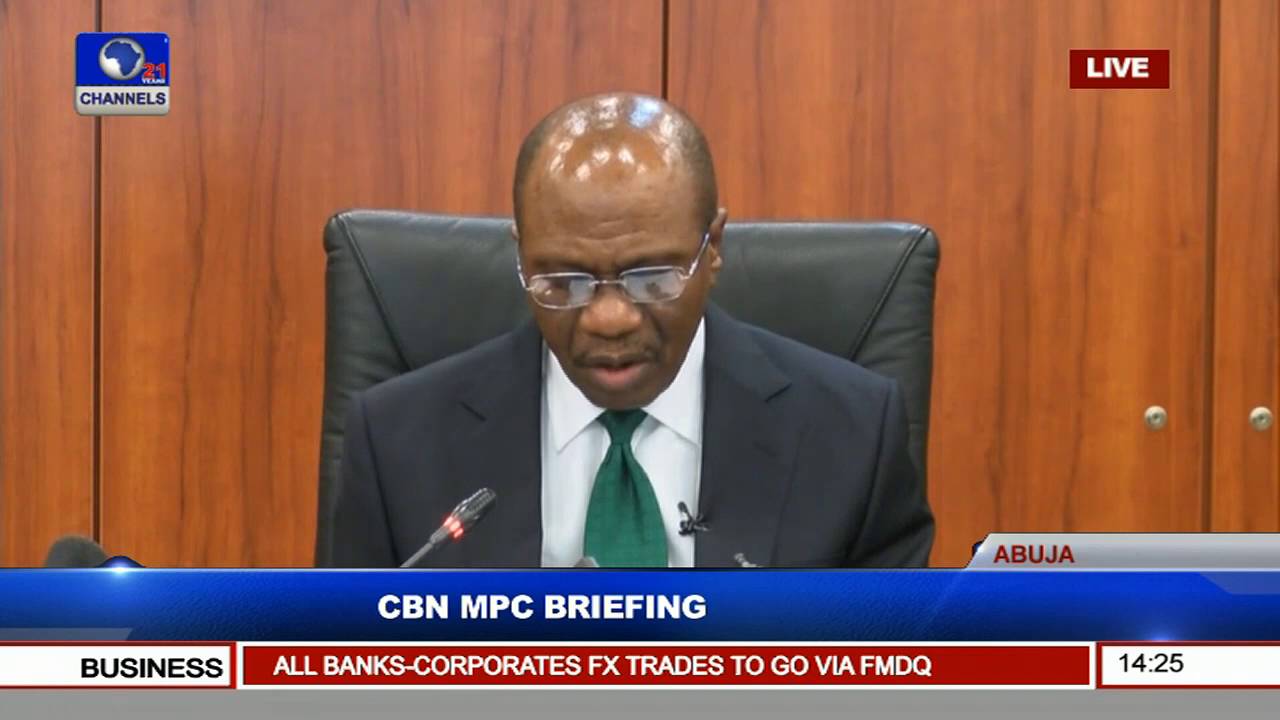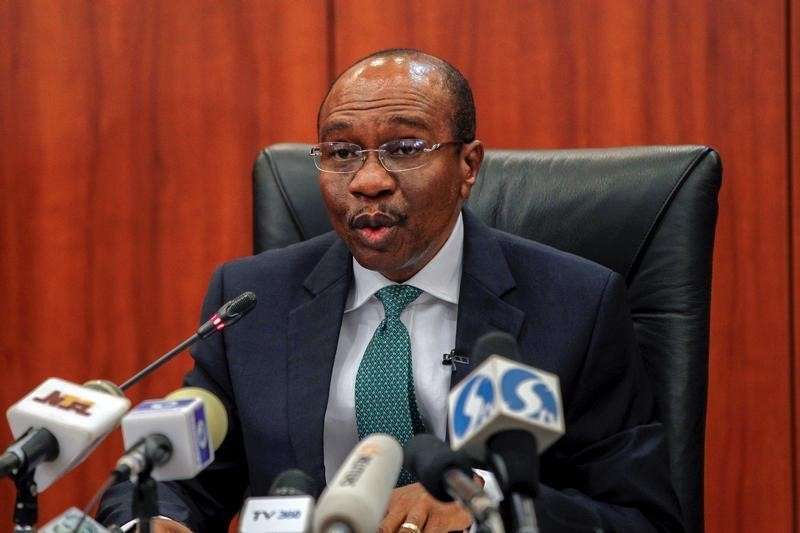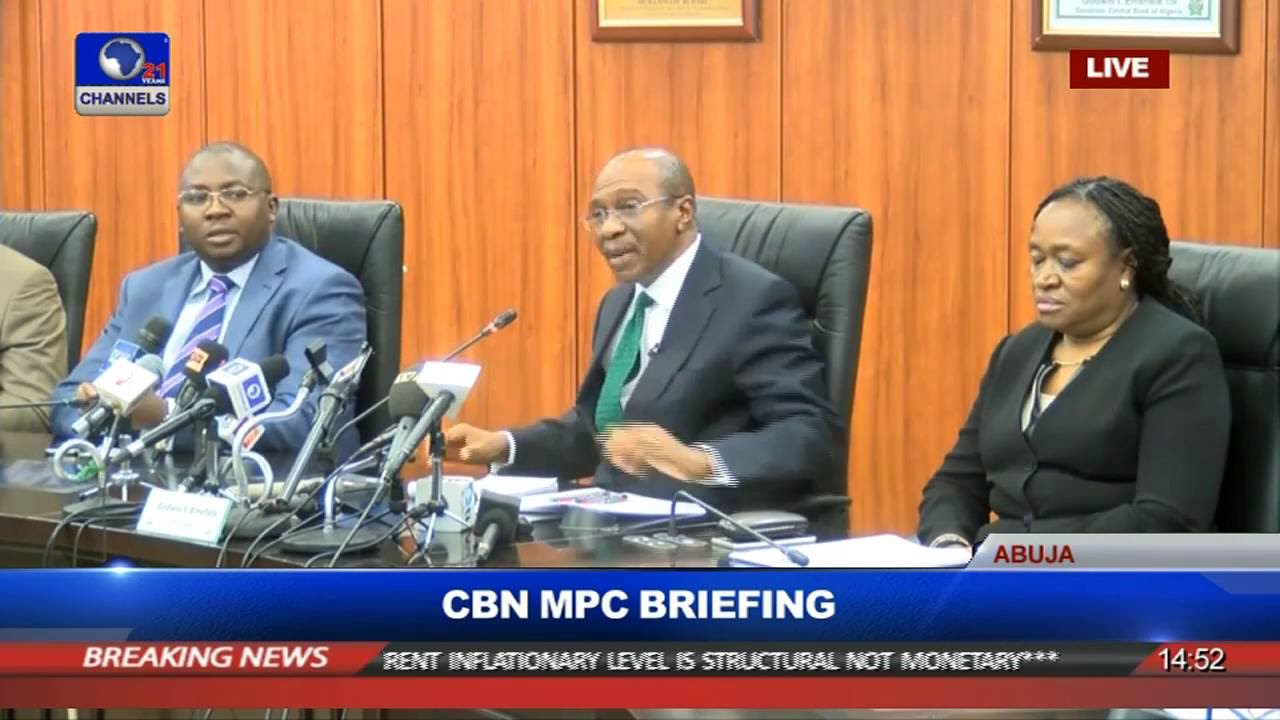Economy
MPC to Maintain Status Quo on Policy Variables Despite Falling Market Rates

By Afrinvestor Research
Since we released our Pre-MPC Note last week, two major developments have surfaced in the global and domestic scene with potential impacts on domestic market condition and near term outlook for monetary policy.
Whilst we consider these events important talking points as the Monetary Policy Committee (MPC) convenes next week (tomorrow) to deliberate, our expectation of the outcome of the meeting remains unchanged as we anticipate committee members to overwhelmingly vote to retain policy rates at current levels.
The first major development is the outcome of the US Fed policy meeting which held midweek. Dismissing the deceleration in US inflation rate below the 2.0% target since the start of the year as a “mystery”, the US Fed Chairman, Janet Yellen, guided on one additional rate hike in 2017 and three more in 2018 in addition to measures to begin slowly reducing the Fed’s US$4.5tn balance sheet.
Although the slightly hawkish statement of the US Fed caught many by surprise, markets’ reaction has so far been calm against the backdrop of the strong and synchronized global growth expansion as well as effective use of forward guidance communication by the Fed to guide on a policy path.
Thus, US equity markets, which have been on a tear this year, traded flattish on Wednesday and Thursday, although yields have risen on US bonds and Emerging Market sovereign and corporate Eurobonds. Nonetheless, we do not expect the MPC to respond as the likelihood of a large-scale capital flow reversal from emerging markets remains low as long as the US Fed sticks to its guided gradual tightening path whilst other major central banks’ policy outlook remains broadly accommodative.
Contrarily, we consider the recent developments in the domestic scene more significant to the MPC’s discourse next week. Over the last three weeks, rates have been dropping sharply in the Treasury Bills market in response to possible near term easing of monetary policy as well as reduction in supply of longer dated bills since CBN stopped offering 364-day bills at its OMO auctions.
Consequently, we have observed a bull flattening pattern (i.e. longer term rates falling faster than shorter ones) at primary and secondary market for Treasury Bills as investors aggressively position in longer-dated bills.
At the PMA held mid-week, the 364-day stop rate fell to 17.0%, 152bps lower than the August 30th Auction stop rate, compared to a 15bps and 56bps drop in 91-day and 182-day papers respectively.
As demand increases relative to supply, secondary market rates on T-bills have also declined across tenors, down 134bps M-o-M as of market close today. The bullish sentiment in the fixed income market is also noticeable in the bond market where yields have dropped 74bps on average M-o-M across benchmark bonds to 16.2%. Given market sentiments are often leading indicators of policy rate changes, we expect the MPC to take notice of recent movements in the yield curve.
However, as we noted in our Pre-MPC note last week, we believe MPC would maintain status quo on all rates next week given the need to consolidate gains on stabilizing FX and inflation rates. Our expectations are based on the following considerations:
Price level remains sticky as high base effect thins out: the National Bureau of Statistics (NBS) Inflation report for August released today indicated Headline inflation marginally decelerated 3bps to 16.01% Y-o-Y from 16.04% in July. M-o-M CPI growth have remained elevated since the start of the year against the backdrop of a food price pressure which took Food Inflation to an all-time high of 20.3% in July 2017. With the economy now running out of high base effect driven moderation in headline inflation, our model projects inflation rate will rise for the first time since the start of the year in September. Given supposed price-anchored monetary policy regime, the MPC is not likely to cut benchmark rate in a period of rising inflation expectation.
MPR has become a less effective Monetary Policy Tool: the case for easing via benchmark rate reduction becomes weaker if the current disparity between the benchmark rate and short-term fixed income yields is taken into consideration. Although the recent bullish streak in the fixed income market has narrowed this spread, it is not enough to justify a cut in interest.
While our medium term outlook favours a gradual monetary easing, we believe the stabilization of the FX market is paramount to achieving monetary policy objectives. The FX market, despite improvements recorded so far in the year, is still in a fragile state as the CBN is yet to harmonize all rates at the official market. As such, in the event that a unified rate is not achieved, monetary easing poses a threat for FX stability. Furthermore, the current realities of Nigeria’s budget deficit, suggests the need for the fiscal authorities to continuously fund this disparity which current tightening stance enhances; though at a higher cost to government.
In light of the above, the more rational decision we foresee the MPC making is to maintain status quo and continue to consolidate on gains in the FX market. Hence, we believe the outcome of the 5th MPC meeting would be to; retain the MPR at 14.0%; retain the CRR at 22.5%; retain the Liquidity Ratio at 30.0%; and retain the Asymmetric corridor at +200 and -500 basis points around the MPR.
Economy
ACCI Urges Policy Consistency, MSMEs Protection in 2026

By Adedapo Adesanya
The Abuja Chamber of Commerce and Industry (ACCI) has called for policy consistency, the protection of Micro Small and Medium Enterprises (MSMEs), and private sector-led growth to strengthen Nigeria’s economy in 2026.
The President of the chamber, Mr Emeka Obegolu, made the call in a New Year message issued by the ACCI Media and Strategy Officer, Mrs Olayemi John-Mensah, on Thursday in Abuja.
He submitted that consistent policies and private-sector-friendly reforms were critical to reducing the cost of doing business and achieving sustainable economic development, stressing the need for strong protection of MSMEs, describing them as the backbone of the Nigerian economy.
According to him, sustained stakeholder engagement and predictable reforms would encourage investment and business expansion.
The ACCI president said the organised private sector remained cautiously optimistic about business opportunities in 2026, noting that the optimism persisted in spite global and domestic economic pressures affecting businesses.
He commended Nigerian businesses for their resilience and adaptability in navigating the economic challenges of 2025, adding that businesses demonstrated commitment to innovation and value creation despite inflation and foreign exchange volatility.
Mr Obegolu also cited high energy costs, rising interest rates and limited access to finance as key constraints faced by enterprises.
According to him, these challenges underscored the importance of chambers of commerce in advocating stability and competitiveness.
He said economic reforms were necessary but should be carefully sequenced to safeguard MSMEs and organised businesses.
Mr Obegolu warned that poorly managed reforms could result in business closures, job losses and capital flight.
He drew attention to over N720 billion in outstanding contractor debts owed by government.
He said delayed settlement of verified obligations had weakened cash flows and disrupted supply chains.
According to him, the situation had particularly affected indigenous contractors and MSMEs nationwide.
He urged government to prioritise transparent verification and timely settlement of the debts to stimulate economic activity.
Mr Obegolu also called on the Federal Government and the FCT Administration to create a more enabling and predictable business environment.
He noted that Abuja had evolved into a major commercial and investment hub requiring stronger infrastructure and regulatory support.
He reaffirmed ACCI’s commitment to constructive engagement with government to promote ease of doing business and inclusive economic growth.
Economy
AfCFTA: FG to Identify One Exportable Product from Each of 774 Local Councils

By Adedapo Adesanya
The Minister of Industry, Trade and Investment, Mrs Jumoke Oduwole, has said the federal government would deepen its participation in the African Continental Free Trade Area (AfCFTA) in 2026 by working with state governors to identify at least one exportable product in each of the country’s 774 local governments.
The move gears towards scaling production, boosting non-oil exports, and strengthening competitiveness across Africa.
She made this disclosure while speaking on Nigeria’s AfCFTA Achievements Report 2025 under the Federal Ministry of Industry, Trade and Investment.
The Minister noted that Nigeria’s AfCFTA Agenda in 2026 will be building on implementation milestones recorded in 2025.
According to her, the plan aims at positioning the country to better exploit opportunities under the continent-wide trade pact.
Operationalised through the AfCFTA Central Coordination Committee (CCC), the Ministry will collaborate with development partners across public and private sector institutions to mobilise production nationwide, while also undertaking an awareness and sensitisation campaign.
“FMITI will work with the Nigerian Governors’ Forum and State Governments to identify a minimum of one (1) product that each Local Government Area can export into the AfCFTA market,” the report stated.
Beyond local production, the 2026 agenda places a strong emphasis on creating an enabling policy and regulatory environment to support the full implementation of the AfCFTA Agreement and its protocols, with the Ministry of Industry, Trade, and Investment leading the regulatory alignment efforts.
In addition, Nigeria plans to upgrade trade data systems to effectively track AfCFTA trade flows, including disaggregated data on goods, services, and participation by women and youth, while expanding global advocacy and hosting key continental trade events ahead of the Intra-African Trade Fair in 2027.
The report also outlines plans to demystify AfCFTA rules and compliance requirements through a series of targeted publications for businesses, alongside measures to strengthen institutional coordination and improve accountability among public sector agencies involved in trade facilitation.
On investment and industrial capacity, the document notes that: “Investment mobilisation efforts with foreign and domestic investors will prioritise the exponential increase of productive capacity in key sectors, to position Nigeria as the innovation, production and distribution hub of the AfCFTA market.”
Economy
NNPC Plans New Oil Fields Development, to Raise $30bn by 2030

By Adedapo Adesanya
The Nigerian National Petroleum Company (NNPC) Limited plans to develop new oil fields from next year and seeks to raise at least $30 billion by the end of the decade.
According to Bloomberg, this was disclosed by senior officials familiar with the plans in the country which is Africa’s largest oil producing nation.
The state-owned oil firm is raising the money as part of efforts to reverse years of underinvestment that have left several discoveries undeveloped, the people said, without disclosing the new fields being targeted.
The publication revealed that the NNPC expects significant investment decisions to come through next year, according to the people who declined to be identified because the talks involve confidential commercial matters.
The sources also said the NNPC is also reviewing its portfolio and plans to sell non-performing fields, adding that the firm will likely meet more than half of its fundraising target.
The energy company plans to develop some of the fields in-house and is expected to call for bids early next year, the people said.
NNPC also plans to boost oil output by 5 per cent to 1.8 million barrels per day next year compared with 2025 and is targeting 4 million barrels of daily output by 2030.
It also targets the completion of the $2.8 billion Ajaokuta-Kaduna-Kano (AKK) pipeline, connecting various segments to the main line from early next year, one of the people said.
Once ready, the pipeline will deliver gas at scale to parts of northern Nigeria including the capital of Abuja, supplying industrial parks, fertilizer plants and power-generation facilities.
Recall that the chief executive of the NNPC, Mr Bashir Ojulari, recently said the country would begin to export gas from the $2.8 billion Ajaokuta-Kaduna-Kano (AKK) pipeline from early 2026.
First conceived in 2008, the AKK pipeline is central to Nigeria’s ambition to leverage its vast gas reserves for economic growth. Its completion could transform the north, where chronic power shortages and a lack of energy infrastructure have stifled manufacturing for decades.
-

 Feature/OPED6 years ago
Feature/OPED6 years agoDavos was Different this year
-
Travel/Tourism9 years ago
Lagos Seals Western Lodge Hotel In Ikorodu
-

 Showbiz3 years ago
Showbiz3 years agoEstranged Lover Releases Videos of Empress Njamah Bathing
-

 Banking8 years ago
Banking8 years agoSort Codes of GTBank Branches in Nigeria
-

 Economy3 years ago
Economy3 years agoSubsidy Removal: CNG at N130 Per Litre Cheaper Than Petrol—IPMAN
-

 Banking3 years ago
Banking3 years agoFirst Bank Announces Planned Downtime
-

 Banking3 years ago
Banking3 years agoSort Codes of UBA Branches in Nigeria
-

 Sports3 years ago
Sports3 years agoHighest Paid Nigerian Footballer – How Much Do Nigerian Footballers Earn





















